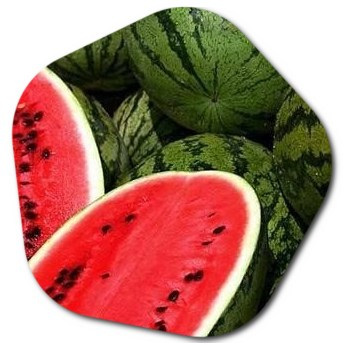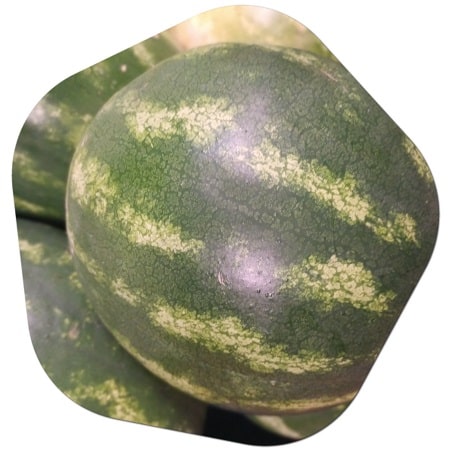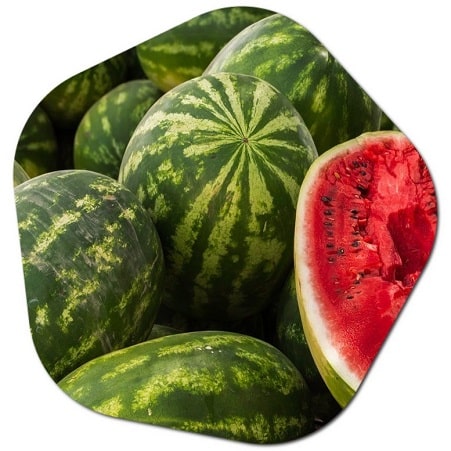What season does watermelon grow in the US?
Watermelons are warm-season fruits that require a relatively long and warm growing season to mature properly. In the United States, watermelons are typically grown during the summer months, which provide the ideal conditions for their growth and ripening. The specific planting and harvesting times may vary depending on the region and climate within the US.
Generally, watermelons are planted in spring, after the danger of frost has passed and the soil has warmed up. The seeds or seedlings are typically planted when the soil temperature reaches around 70°F (21°C) or above. This is usually in late spring or early summer, depending on the location.
Watermelons require a consistent warm temperature throughout their growing period. They thrive in temperatures between 70°F (21°C) and 90°F (32°C). Once planted, watermelon plants usually take around 70 to 90 days to reach maturity and produce ripe fruit.
In many parts of the US, watermelons are harvested from late summer to early fall, typically from July to September. The exact harvest time may vary depending on the specific watermelon variety, growing conditions, and the desired level of ripeness. It’s important to monitor the plants and observe the signs of maturity, such as a dull rind color, a dried tendril near the fruit, and a hollow sound when tapped.

Keep in mind that these timeframes are general guidelines, and they can vary depending on the local climate and the specific variety of watermelon being grown. It’s always beneficial to consult local gardening resources, extension offices, or experienced growers in your specific region for more precise information on when to plant and harvest watermelons.
What states are best for growing watermelon US?
Watermelons can be successfully grown in various states across the United States, but certain regions are known for their ideal growing conditions and high-quality watermelon production. Here are some states that are generally considered well-suited for growing watermelons:
- Southern States: Southern states such as Texas, Florida, Georgia, Alabama, Mississippi, and Louisiana have long, hot summers, which provide the necessary warmth and extended growing season for watermelons. These states are known for their commercial watermelon production.
- Midwest States: States like Illinois, Indiana, Missouri, and Ohio are also known for their watermelon cultivation. The warm summers and fertile soils in these regions contribute to successful watermelon crops.
- Southeast States: South Carolina, North Carolina, Tennessee, and Virginia have favorable climates for growing watermelons. These states offer a combination of warm temperatures, ample sunshine, and adequate rainfall.
- Southwest States: Arizona and California, particularly in the desert regions, have the advantage of consistent warm temperatures and dry conditions, which can be beneficial for watermelon production.
- California’s Central Valley: The Central Valley of California is renowned for its extensive agricultural production, including watermelons. The region’s warm and dry climate, along with fertile soils, supports the cultivation of high-quality watermelons.
It’s worth noting that while these states are known for their watermelon production, watermelons can be grown in other regions of the United States as well, provided the right growing conditions are met. Factors such as temperature, sunlight, soil quality, and water availability play important roles in determining the success of watermelon cultivation.
When considering growing watermelons, it’s always recommended to choose varieties that are well-adapted to your specific region and consult local gardening resources or extension offices for tailored advice and guidance on growing watermelons in your particular area. Can Watermelon Grow in America? >>
Where does watermelon grow in USA?
Watermelons are grown in various regions across the United States, taking advantage of the diverse climates and growing conditions found throughout the country. Here are some key regions where watermelons are commonly grown in the USA:
- Southeast: States such as Florida, Georgia, Alabama, Mississippi, and South Carolina are major watermelon producers in the Southeast. The warm climate, long growing season, and fertile soils make these states ideal for watermelon cultivation.
- Texas: Texas is another significant watermelon-growing state, particularly in the southern and eastern regions. The warm temperatures and ample sunshine create favorable conditions for watermelon production.
- California: California is a major watermelon-producing state, with regions such as the Central Valley and Imperial Valley being renowned for their watermelon crops. The warm and dry climate, along with the state’s extensive agricultural infrastructure, contribute to successful watermelon cultivation.
- Midwest: The Midwest states, including Illinois, Indiana, Missouri, Ohio, and Michigan, have suitable climates for watermelon cultivation. The warm summers and fertile soils in these regions support watermelon production.
- Southwest: Arizona is known for watermelon cultivation, particularly in the desert regions. The arid climate and ample sunshine provide favorable conditions for growing watermelons.
- Mid-Atlantic and Northeast: States like Pennsylvania, New Jersey, Maryland, and Delaware have suitable growing conditions for watermelons. While the growing season may be shorter compared to southern states, there are varieties that can thrive in these regions.
- Other Regions: Watermelons are also grown in various other states, including Arkansas, Louisiana, Oklahoma, North Carolina, Tennessee, and Kentucky, among others. These states offer a range of climates and growing conditions that can support watermelon cultivation.

It’s important to note that specific varieties and growing practices may vary depending on the region within each state. Factors such as temperature, rainfall, soil type, and local growing traditions can influence the success and characteristics of watermelon crops in different areas of the United States. Where is the Best Watermelon to Grow in the United States? >>
Information about watermelon grown in the USA
Watermelon (Citrullus lanatus) is a popular and widely cultivated fruit in the United States. Here is some information about watermelon grown in the USA:
- Cultivation Areas: Watermelons are grown in various regions across the country, taking advantage of the diverse climates and growing conditions. Some of the major watermelon-producing states in the USA include Florida, Georgia, Texas, California, Alabama, Mississippi, South Carolina, North Carolina, and Illinois.
- Varieties: There are numerous watermelon varieties grown in the USA, each with its own characteristics and qualities. Common watermelon varieties include seeded, seedless, and mini or personal-sized watermelons. Varieties like Crimson Sweet, Jubilee, Sugar Baby, and Charleston Gray are popular choices among growers and consumers.
- Growing Conditions: Watermelons require warm temperatures, plenty of sunlight, and well-drained soil to thrive. They are typically planted in spring or early summer when the soil temperature reaches around 70°F (21°C) or above. The warm and long summers found in many parts of the USA provide the ideal conditions for watermelon growth.
- Cultivation Practices: Watermelons are typically grown as annual crops in the USA. They are planted from seeds or transplants and require adequate irrigation throughout the growing season. Farmers may use techniques such as raised beds, plastic mulching, and drip irrigation to enhance growth and yield. Pest and disease management are important aspects of watermelon cultivation, and farmers employ various strategies to control pests and diseases effectively.
- Harvesting: Watermelons are harvested when they are fully ripe and mature. Signs of ripeness include a dull skin color, a dried tendril near the fruit, and a hollow sound when thumped. Harvesting is usually done by hand, and care is taken to prevent damage to the fruit.
- Economic Importance: Watermelon is a significant crop in the agricultural industry of the USA. It is commercially grown for domestic consumption as well as for export. Watermelon festivals and events are popular in many watermelon-growing regions, showcasing the importance of the fruit to local communities.
- Nutrition and Consumption: Watermelons are known for their high water content and refreshing taste. They are low in calories and provide essential vitamins, minerals, and antioxidants. Watermelons are enjoyed fresh, sliced, in salads, in fruit juices, and as a base for various summer desserts.
It’s important to note that specific cultivation practices and varieties may vary depending on the region and individual farming practices. Local agricultural extension offices, farmers’ associations, and seed companies can provide more region-specific information for watermelon cultivation in the USA.
What Season is Watermelon Grown in America?
Watermelons are typically grown in America during the warm summer season. The specific planting and harvesting times may vary depending on the region and climate within the country. Here is a general overview of the seasons for watermelon cultivation in America:
- Spring: Watermelon seeds or transplants are typically planted in spring when the soil has warmed up and the danger of frost has passed. The exact timing varies depending on the specific region and local climate. In warmer southern states, such as Florida and Texas, planting can begin as early as March or April. In cooler northern regions, it may be later, starting in May or early June.
- Summer: Watermelons thrive in the warm temperatures and ample sunlight of the summer season. They require consistent warmth for optimal growth and fruit development. Summer is the main growing season for watermelons in America, with plants establishing themselves, flowering, and producing fruit during this time.
- Harvest: Watermelons are typically ready for harvest in late summer to early fall, depending on the specific variety and growing conditions. Harvest times can vary from June to October, with peak harvesting usually occurring in July and August. Monitoring the signs of ripeness, such as rind color, tendril drying, and the sound when tapped, can help determine the ideal time for harvest.
It’s worth noting that these timeframes are general guidelines, and they can vary depending on the specific watermelon variety, local climate, and growing practices. Factors such as temperature, sunlight, and water availability play important roles in determining the growth and maturity of watermelon crops. It is advisable to consult local gardening resources, extension offices, or experienced growers in your specific region for more precise information on when to plant and harvest watermelons.
In which state and in which month is Watermelon planted in America?
Watermelon planting times in America can vary depending on the region and climate. Here is a general overview of watermelon planting months for some key states:

- Florida: Watermelons are planted in Florida as early as January or February in southern regions and as late as March or April in northern regions.
- Texas: Watermelon planting in Texas typically occurs from late March to early June, depending on the region. South Texas may start planting in March, while North Texas may plant in May or early June.
- Georgia: Watermelon planting in Georgia usually takes place from late March to early June. The exact timing depends on the specific region within the state.
- California: Watermelon planting in California can begin as early as March in southern regions and extend through May in the northern parts of the state.
- North Carolina: Watermelon planting in North Carolina typically starts in late April or early May and continues through June, depending on the specific location.
- Illinois: Watermelon planting in Illinois generally begins in late May or early June, after the danger of frost has passed.
It’s important to note that these planting times are approximate and can vary depending on factors such as local climate, frost dates, and specific watermelon varieties. It’s always recommended to consult local gardening resources, extension offices, or experienced growers in your specific region for the most accurate information on when to plant watermelons.





